
In rare rebuke, a large share of tariffs are eliminated — for now. In other Business news: the US Lumber Coalition continues to push for US lumber reliance; Boeing invests millions to manufacture sustainable jet fuel in Canada; and home sales continue to slump in the face of economic uncertainty. Meanwhile: take a peek inside Canada’s first Mass Timber tower, or the tallest mass timber building on the East Coast.
In Forestry news: Quw’utsun Nation enters into a co-management Municipal Forest agreement but some disagree; World Wildlife Fund addresses the seed shortage; Elliot State Research Forest tightens conservation efforts; and legal actions attempt to defend the Tongass National Forest from old-growth logging.
In Wildfire news: Fire bans are introduced in coastal BC; the dichotomy of fire; Manitoba declares a state of emergency, and Kenora fires grow overnight.
Finally, Psychological Health, Training Smart and Emergency Preparedness and Response take the stage in today’s Safety features.
Suzanne Hopkinson, Tree Frog News Editor
 “Today, Canada’s First Ministers met in Saskatoon, Saskatchewan, to build a stronger, more competitive, and more resilient Canadian economy… “This is a first step in implementing a broader set of reforms to overhaul the project assessment process. A significantly improved, streamlined project assessment process is necessary for Canada to grow its economy to become the strongest in the G7 and a global energy superpower. “First Ministers are committed to immediately begin to address project approval and permitting efficiency and timelines for all projects. Premiers welcomed the Prime Minister’s commitment to ensuring all federal assessment decisions are rendered within two years, beginning with projects of national interest. First Ministers also agreed to work toward efficiently and effectively implementing ‘one project, one review’ with the goal of a single assessment for all projects, in a manner that respects federal, provincial, and territorial jurisdiction, enhancing co-ordination activities on permitting and eliminating duplication.
“Today, Canada’s First Ministers met in Saskatoon, Saskatchewan, to build a stronger, more competitive, and more resilient Canadian economy… “This is a first step in implementing a broader set of reforms to overhaul the project assessment process. A significantly improved, streamlined project assessment process is necessary for Canada to grow its economy to become the strongest in the G7 and a global energy superpower. “First Ministers are committed to immediately begin to address project approval and permitting efficiency and timelines for all projects. Premiers welcomed the Prime Minister’s commitment to ensuring all federal assessment decisions are rendered within two years, beginning with projects of national interest. First Ministers also agreed to work toward efficiently and effectively implementing ‘one project, one review’ with the goal of a single assessment for all projects, in a manner that respects federal, provincial, and territorial jurisdiction, enhancing co-ordination activities on permitting and eliminating duplication. A U.S. court delivered a sharp rebuke of President Donald Trump’s trade policy on Wednesday, declaring he abused his authority and striking down many of his tariffs — at least for now. The upshot for trading partners, including Canada: Certain specific tariffs on steel and aluminum remain in place, but gone, for now, are sweeping levies on entire countries. The order by the Manhattan-based U.S. Court of International Trade quashes Trump’s 10 per cent across-the-board tariff on most nations and his declaration of a fentanyl emergency to impose 25 per cent tariffs on numerous Canadian and Mexican goods. The White House vowed to fight back with every available tool. This means an
A U.S. court delivered a sharp rebuke of President Donald Trump’s trade policy on Wednesday, declaring he abused his authority and striking down many of his tariffs — at least for now. The upshot for trading partners, including Canada: Certain specific tariffs on steel and aluminum remain in place, but gone, for now, are sweeping levies on entire countries. The order by the Manhattan-based U.S. Court of International Trade quashes Trump’s 10 per cent across-the-board tariff on most nations and his declaration of a fentanyl emergency to impose 25 per cent tariffs on numerous Canadian and Mexican goods. The White House vowed to fight back with every available tool. This means an  The U.S. Lumber Coalition, a nationwide alliance of softwood lumber dealers, continues to rail against what it views as “unfair Canadian trade practices” that dilute demand, production and competition in the country. Last week, it sent out a
The U.S. Lumber Coalition, a nationwide alliance of softwood lumber dealers, continues to rail against what it views as “unfair Canadian trade practices” that dilute demand, production and competition in the country. Last week, it sent out a 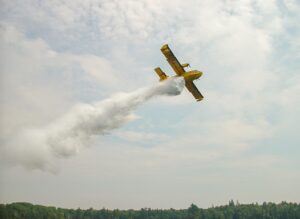 Weyerhaeuser Company and Firefighter Behavioral Health Alliance (FBHA) today announced an extension of their Fighting Fires Together campaign, a partnership that provides specialized mental health support for wildland firefighters and their families across the Pacific Northwest. Fighting Fires Together, now in its fourth year, addresses the often-overlooked mental health impacts of wildland firefighting in isolated, hazardous and highly stressful conditions. Through a free online resource hub, first responders can find specially designed content, including videos about Post Traumatic Stress Disorder, depression, anxiety and suicide prevention, along with mental health tips, educational articles and contacts for occupationally aware support groups and counselors in Oregon, Washington and British Columbia. Weyerhaeuser’s support for wildland firefighting efforts in the Pacific Northwest began in the aftermath of the Yacolt Burn in 1902, when the company began advocating for Washington’s first forest fire legislation and the funding of community fire prevention education and patrols.
Weyerhaeuser Company and Firefighter Behavioral Health Alliance (FBHA) today announced an extension of their Fighting Fires Together campaign, a partnership that provides specialized mental health support for wildland firefighters and their families across the Pacific Northwest. Fighting Fires Together, now in its fourth year, addresses the often-overlooked mental health impacts of wildland firefighting in isolated, hazardous and highly stressful conditions. Through a free online resource hub, first responders can find specially designed content, including videos about Post Traumatic Stress Disorder, depression, anxiety and suicide prevention, along with mental health tips, educational articles and contacts for occupationally aware support groups and counselors in Oregon, Washington and British Columbia. Weyerhaeuser’s support for wildland firefighting efforts in the Pacific Northwest began in the aftermath of the Yacolt Burn in 1902, when the company began advocating for Washington’s first forest fire legislation and the funding of community fire prevention education and patrols. 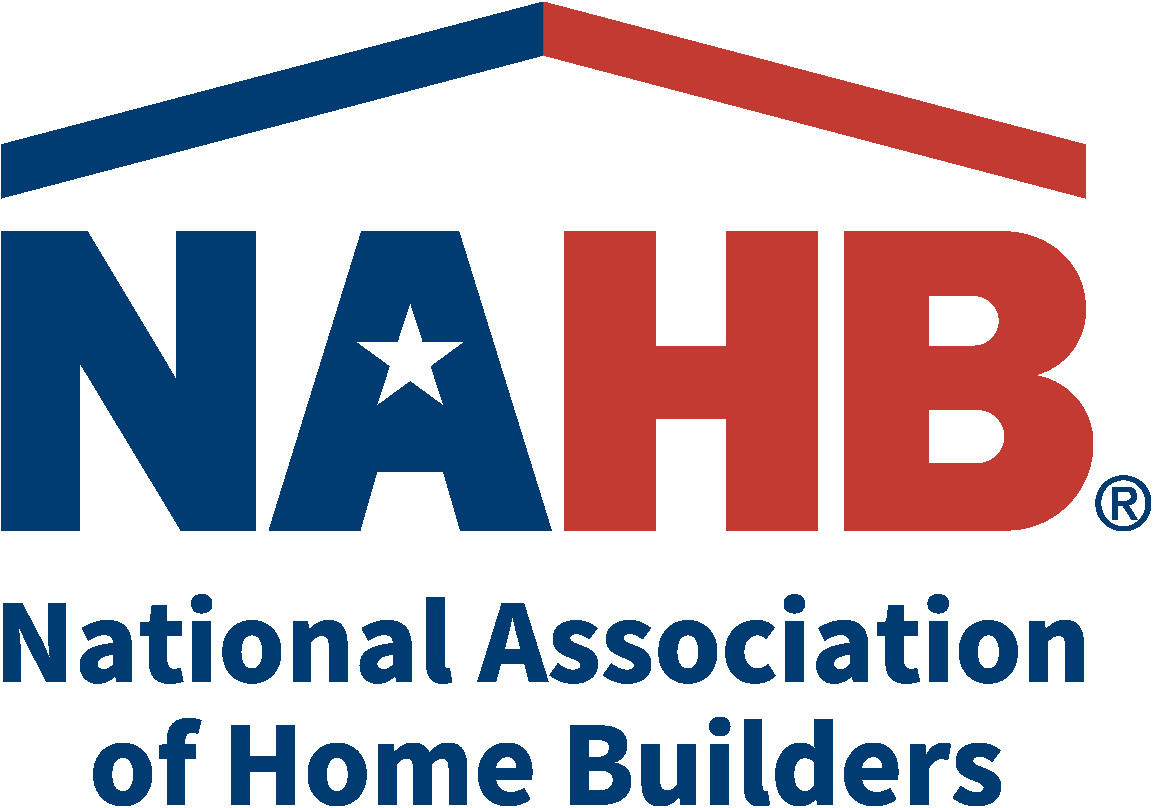
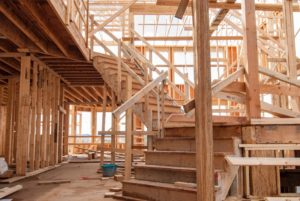 Economic uncertainty has produced a double whammy for the housing market: sluggish home sales and plodding construction. Last month was the slowest April for existing home sales in 16 years — a sharp rebuke to hopes that this spring the housing market would recover after two very sleepy years. In a May survey of builder confidence conducted by Wells Fargo and the National Association of Home Builders, home builder sentiment dropped to a level last seen in November 2023. The problem, as ever, is the cost of housing: Home prices are out of reach for many who would like to buy. And the tariff drama under President Trump has both made it more expensive to build new homes and made the future more unpredictable for would-be homebuyers. The result is a country where builders want to build, and buyers want to buy — but the future is too much in doubt.
Economic uncertainty has produced a double whammy for the housing market: sluggish home sales and plodding construction. Last month was the slowest April for existing home sales in 16 years — a sharp rebuke to hopes that this spring the housing market would recover after two very sleepy years. In a May survey of builder confidence conducted by Wells Fargo and the National Association of Home Builders, home builder sentiment dropped to a level last seen in November 2023. The problem, as ever, is the cost of housing: Home prices are out of reach for many who would like to buy. And the tariff drama under President Trump has both made it more expensive to build new homes and made the future more unpredictable for would-be homebuyers. The result is a country where builders want to build, and buyers want to buy — but the future is too much in doubt.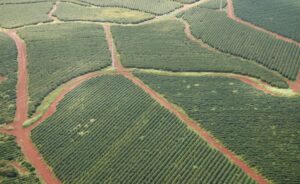 An increasing demand for timber to meet Australia’s housing targets is set to drive a change in focus for one of Australia’s largest forestry regions. The Green Triangle, situated across the southern South Australia–Victorian border, has about 334,000 hectares of plantations, representing 17 per cent of Australia’s forestry industry. The region grows a mix of softwood timber, primarily used in domestic construction, and hardwood, which is often exported as wood chips and used in paper manufacturing. But as Australia looks to meet its goal of building 1.2 million new homes by 2029, investment in softwood is growing fast. “Both the state and the federal governments have incentives in place for industry and private investors to grow radiata pine,” University of Melbourne forest ecologist Rod Keenan said.
An increasing demand for timber to meet Australia’s housing targets is set to drive a change in focus for one of Australia’s largest forestry regions. The Green Triangle, situated across the southern South Australia–Victorian border, has about 334,000 hectares of plantations, representing 17 per cent of Australia’s forestry industry. The region grows a mix of softwood timber, primarily used in domestic construction, and hardwood, which is often exported as wood chips and used in paper manufacturing. But as Australia looks to meet its goal of building 1.2 million new homes by 2029, investment in softwood is growing fast. “Both the state and the federal governments have incentives in place for industry and private investors to grow radiata pine,” University of Melbourne forest ecologist Rod Keenan said.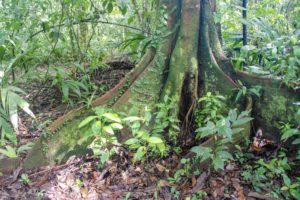 New Forests, a global investment manager of nature-based real assets and natural capital strategies, is today announcing its Tropical Asia Forest Fund 2 (TAFF2) has made its first investment in timber processing infrastructure in Vietnam by investing in the Tavico Group (Tavico), one of the country’s leading suppliers of solid wood lumber and logs. Tavico was founded in 2005 as a log trader and sawn timber mill with annual production capacity of 12,000m3 of lumber per annum, which is equivalent to approximately 800 medium sized houses. Tavico has established a 3,200-hectare FSC certified community forestry program with small holder farmers which provides employment and revenue sharing opportunities for local communities. The investment from TAFF2 will look to expand this program for smallholder farmers in Vietnam.
New Forests, a global investment manager of nature-based real assets and natural capital strategies, is today announcing its Tropical Asia Forest Fund 2 (TAFF2) has made its first investment in timber processing infrastructure in Vietnam by investing in the Tavico Group (Tavico), one of the country’s leading suppliers of solid wood lumber and logs. Tavico was founded in 2005 as a log trader and sawn timber mill with annual production capacity of 12,000m3 of lumber per annum, which is equivalent to approximately 800 medium sized houses. Tavico has established a 3,200-hectare FSC certified community forestry program with small holder farmers which provides employment and revenue sharing opportunities for local communities. The investment from TAFF2 will look to expand this program for smallholder farmers in Vietnam. Packaging is going back to its roots. Long before the advent of plastics, before the rise of mass production and the widespread adoption of synthetic materials, early civilisations relied on what the natural world had to offer – pressed bark, woven plant fibres, and rudimentary pulps – to store and transport food and goods. Paper, in particular, has long served as a trusted material for containment and communication alike. Today, that ancient material is undergoing a resurgence and is evolving to not only meet contemporary functional needs but also to respond to an urgent call for environmental responsibility. The rapid shift away from single-use plastic has created new momentum behind paper-based alternatives. From luxury goods wrapped in soft textured, bespoke papers to barrier coated containers engineered for performance and recyclability, fibre-based packaging is no longer confined to brown boxes or rustic aesthetics. It is becoming more refined, more versatile, and, crucially, more sustainable – at least on the surface.
Packaging is going back to its roots. Long before the advent of plastics, before the rise of mass production and the widespread adoption of synthetic materials, early civilisations relied on what the natural world had to offer – pressed bark, woven plant fibres, and rudimentary pulps – to store and transport food and goods. Paper, in particular, has long served as a trusted material for containment and communication alike. Today, that ancient material is undergoing a resurgence and is evolving to not only meet contemporary functional needs but also to respond to an urgent call for environmental responsibility. The rapid shift away from single-use plastic has created new momentum behind paper-based alternatives. From luxury goods wrapped in soft textured, bespoke papers to barrier coated containers engineered for performance and recyclability, fibre-based packaging is no longer confined to brown boxes or rustic aesthetics. It is becoming more refined, more versatile, and, crucially, more sustainable – at least on the surface.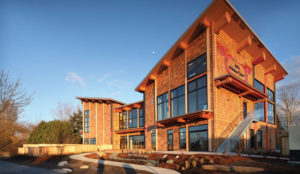 The American Wood Council (AWC) has released a national Mass Timber Alternative Materials and Methods (AMM) Guide for use with the 2018 International Building Code (IBC). This new resource is designed to support building code officials as they review, permit and approve mass timber projects across the country. The AMM Guide is designed to help bridge the gap between the codes adopted in each state and the newer mass timber provisions in the 2024 IBC. Adopting the most recent edition of the Building Code, like the 2024 IBC, can be a slow multi-year process for states or jurisdictions. As a result, there is sometimes a gap between what is included in the currently adopted code in a state and what is allowable based on the latest available ICC I-codes. The AMM guide serves to fill that space by offering code provisions for jurisdictions without mass timber specific guidance.
The American Wood Council (AWC) has released a national Mass Timber Alternative Materials and Methods (AMM) Guide for use with the 2018 International Building Code (IBC). This new resource is designed to support building code officials as they review, permit and approve mass timber projects across the country. The AMM Guide is designed to help bridge the gap between the codes adopted in each state and the newer mass timber provisions in the 2024 IBC. Adopting the most recent edition of the Building Code, like the 2024 IBC, can be a slow multi-year process for states or jurisdictions. As a result, there is sometimes a gap between what is included in the currently adopted code in a state and what is allowable based on the latest available ICC I-codes. The AMM guide serves to fill that space by offering code provisions for jurisdictions without mass timber specific guidance. Pulp and paper company Green Bay Packaging will be breaking ground on a $1 billion expansion to its Morrilton packaging plant Tuesday, according to a news release from Gov. Sarah Huckabee Sanders’ office. The company announced an expansion of its Arkansas Kraft Mill in Morrilton in December. The news release from Sanders’ office lauded the investment as the “largest capital investment project in Central Arkansas’ history.” It comes about a month after the announcement of a $1 billion data center in Little Rock, which was referred to as the “largest economic development capital investment” in Little Rock’s history. Green Bay’s multi-year expansion is geared toward modernization. According to a release, it will “significantly enhance the infrastructure of the mill” and, among other investments, it will involve the installation of an electric turbine generator, which will “substantially reduce” the plant’s Scope One and Scope Two greenhouse gas emissions.
Pulp and paper company Green Bay Packaging will be breaking ground on a $1 billion expansion to its Morrilton packaging plant Tuesday, according to a news release from Gov. Sarah Huckabee Sanders’ office. The company announced an expansion of its Arkansas Kraft Mill in Morrilton in December. The news release from Sanders’ office lauded the investment as the “largest capital investment project in Central Arkansas’ history.” It comes about a month after the announcement of a $1 billion data center in Little Rock, which was referred to as the “largest economic development capital investment” in Little Rock’s history. Green Bay’s multi-year expansion is geared toward modernization. According to a release, it will “significantly enhance the infrastructure of the mill” and, among other investments, it will involve the installation of an electric turbine generator, which will “substantially reduce” the plant’s Scope One and Scope Two greenhouse gas emissions. Global efforts to curb greenhouse gas (GHG) emissions are accelerating across industries, and the construction sector is no exception. With buildings responsible for a significant portion of global emissions, sustainable alternatives have come under intense scrutiny. Cross-laminated timber (CLT) has emerged as a promising substitute that not only reduces the carbon footprint associated with conventional materials like steel and concrete, but also contributes to long-term carbon storage. However, as CLT gains traction in mid- and high-rise construction, its full environmental impact—both positive and negative—must be understood. In a recent study, researchers combined economic modeling with a cradle-to-grave life-cycle assessment (LCA) to capture the comprehensive climate mitigation potential of CLT. This interdisciplinary framework was designed to quantify both the direct emissions benefits of material substitution and the broader market and ecological reactions that come into play when CLT adoption accelerates.
Global efforts to curb greenhouse gas (GHG) emissions are accelerating across industries, and the construction sector is no exception. With buildings responsible for a significant portion of global emissions, sustainable alternatives have come under intense scrutiny. Cross-laminated timber (CLT) has emerged as a promising substitute that not only reduces the carbon footprint associated with conventional materials like steel and concrete, but also contributes to long-term carbon storage. However, as CLT gains traction in mid- and high-rise construction, its full environmental impact—both positive and negative—must be understood. In a recent study, researchers combined economic modeling with a cradle-to-grave life-cycle assessment (LCA) to capture the comprehensive climate mitigation potential of CLT. This interdisciplinary framework was designed to quantify both the direct emissions benefits of material substitution and the broader market and ecological reactions that come into play when CLT adoption accelerates. While images of wildfires capture their ferocity, data can provide insight into how bad a fire season is. Such is the case with two graphics, powered by satellite data, that showcase a Canadian wildfire season off to a wild — and scary — start. Twice a day a NASA satellite sends images to the ground, giving a real-time view of where fires are burning. This is especially useful for remote areas where no sensors are stationed. As of Tuesday that satellite had picked up four times as many fire hot spots across Canada than is typical for early June. Based on data from the
While images of wildfires capture their ferocity, data can provide insight into how bad a fire season is. Such is the case with two graphics, powered by satellite data, that showcase a Canadian wildfire season off to a wild — and scary — start. Twice a day a NASA satellite sends images to the ground, giving a real-time view of where fires are burning. This is especially useful for remote areas where no sensors are stationed. As of Tuesday that satellite had picked up four times as many fire hot spots across Canada than is typical for early June. Based on data from the  Today, the Honourable Tim Hodgson, Minister of Energy and Natural Resources, and the Honourable Patty Hajdu, Minister of Jobs and Families, announced $15 million to create 470 employment and skills training opportunities for youth across Canada in natural resources sectors including energy, forestry, mining, earth sciences and clean technology. Through the Science and Technology Internship Program (STIP) – Green Jobs, employers in natural resources sectors can apply for funding to hire, train and mentor youth aged 15 to 30 for up to 12 months. These job opportunities will ensure that Canada’s natural resources sectors remain a source of economic growth and prosperity in the future. STIP – Green Jobs is part of the Government of Canada’s
Today, the Honourable Tim Hodgson, Minister of Energy and Natural Resources, and the Honourable Patty Hajdu, Minister of Jobs and Families, announced $15 million to create 470 employment and skills training opportunities for youth across Canada in natural resources sectors including energy, forestry, mining, earth sciences and clean technology. Through the Science and Technology Internship Program (STIP) – Green Jobs, employers in natural resources sectors can apply for funding to hire, train and mentor youth aged 15 to 30 for up to 12 months. These job opportunities will ensure that Canada’s natural resources sectors remain a source of economic growth and prosperity in the future. STIP – Green Jobs is part of the Government of Canada’s 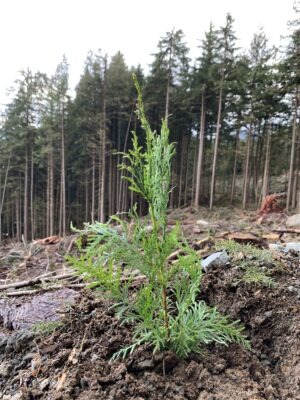 Following fire mitigation efforts in and around the 108 Mile Ranch, a new generation of trees have been planted to restore the land. West Fraser 100 Mile donated 1,200 trees that were planted by treeplanters from Zanzibar Holdings Ltd. on behalf of the 108 Mile Ranch Greenbelt Commission. Greenbelt commissioner Chris Betuzzi said it’s all part of the commission’s work to secure the 108 Mile Ranch against future fire seasons and avoid a repeat of the 2017 Gustafsen fire, which burned parts of Walker Valley. As a registered forest technologist, he said helping manage the forest is a responsibility close to his heart. In May of 2024, Betuzzi said they carried out fire mitigation efforts in three areas along the Greenbelt, including Donsleequa Road, Qua Place and Gloinnzum Drive to reduce forest fuel in the event of a wildfire. Betuzzi said they had Tsi Del Del Enterprises Ltd come up to process the slash piles and fibre.
Following fire mitigation efforts in and around the 108 Mile Ranch, a new generation of trees have been planted to restore the land. West Fraser 100 Mile donated 1,200 trees that were planted by treeplanters from Zanzibar Holdings Ltd. on behalf of the 108 Mile Ranch Greenbelt Commission. Greenbelt commissioner Chris Betuzzi said it’s all part of the commission’s work to secure the 108 Mile Ranch against future fire seasons and avoid a repeat of the 2017 Gustafsen fire, which burned parts of Walker Valley. As a registered forest technologist, he said helping manage the forest is a responsibility close to his heart. In May of 2024, Betuzzi said they carried out fire mitigation efforts in three areas along the Greenbelt, including Donsleequa Road, Qua Place and Gloinnzum Drive to reduce forest fuel in the event of a wildfire. Betuzzi said they had Tsi Del Del Enterprises Ltd come up to process the slash piles and fibre.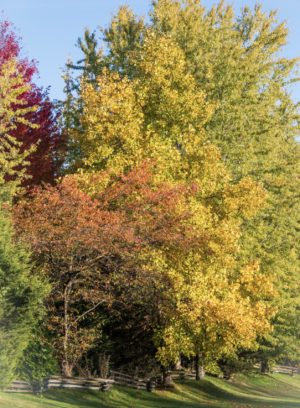 are expected to go up around Edmonton this week to capture the emerald ash borer. The shining and dangerous pest is poised to wreak havoc on Edmonton’s $400-million population of ash trees, and the city has two staffers working full time to detect any advance here as the invasive bug closes in from the west or east into Alberta. “We have the largest percentage of our urban forest canopy in green ash of almost any city in North America,” said Michael Jenkins, senior scientist with the City of Edmonton. Ranging from 8.5 mm to 14 mm long and 3.1 mm to 3.4 mm wide, the beetle is difficult to spot. “A single piece of firewood can destroy millions of trees,” warns a poster depicting a stack of ash firewood as dynamite sticks with an emerald ash borer at the tip of the fuse.
are expected to go up around Edmonton this week to capture the emerald ash borer. The shining and dangerous pest is poised to wreak havoc on Edmonton’s $400-million population of ash trees, and the city has two staffers working full time to detect any advance here as the invasive bug closes in from the west or east into Alberta. “We have the largest percentage of our urban forest canopy in green ash of almost any city in North America,” said Michael Jenkins, senior scientist with the City of Edmonton. Ranging from 8.5 mm to 14 mm long and 3.1 mm to 3.4 mm wide, the beetle is difficult to spot. “A single piece of firewood can destroy millions of trees,” warns a poster depicting a stack of ash firewood as dynamite sticks with an emerald ash borer at the tip of the fuse.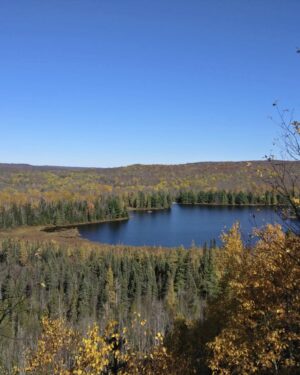 The Quw’utsun Nation and the Municipality of North Cowichan are moving forward on a co-management framework for the Municipal Forest Reserve. The initiative is being developed with the help of Your Wayfinders Management Solutions, a project management consulting firm. The goal is to create a partnership in key areas like shared decision-making, economic opportunities, Indigenous forest practices, recreation, and stewardship of culturally sensitive areas. A final draft plan is expected by early 2026. In the meantime, North Cowichan has paused new decisions on the forest reserve, but essential activities like FireSmart work and invasive species control will continue. North Cowichan had a technical review and public engagement done for the forest reserve between 2020 and 2023, and a preferred forest management scenario favouring ecological and sustainable values was presented to council.
The Quw’utsun Nation and the Municipality of North Cowichan are moving forward on a co-management framework for the Municipal Forest Reserve. The initiative is being developed with the help of Your Wayfinders Management Solutions, a project management consulting firm. The goal is to create a partnership in key areas like shared decision-making, economic opportunities, Indigenous forest practices, recreation, and stewardship of culturally sensitive areas. A final draft plan is expected by early 2026. In the meantime, North Cowichan has paused new decisions on the forest reserve, but essential activities like FireSmart work and invasive species control will continue. North Cowichan had a technical review and public engagement done for the forest reserve between 2020 and 2023, and a preferred forest management scenario favouring ecological and sustainable values was presented to council.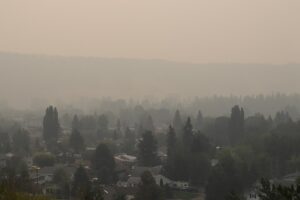 As dozens of wildfires continue to burn across Canada, flames are sending far-reaching plumes of smoke into the sky and unhealthy air to distant places. Some of the more gigantic blazes have been delivering thick smoke that spread southward into the United States over recent days. The fires are burning from British Columbia, through Alberta and Saskatchewan to Manitoba and Ontario — with several between 100,000 and 300,000 hectares apiece. More smoky skies are expected as this week begins, although the smoke is not expected to be as thick as it’s been in recent days. Prime fire season in Canada is just beginning, though already about half a year’s worth of land has been scorched, according to the long-term average. [a paid subscription is required to read this article]
As dozens of wildfires continue to burn across Canada, flames are sending far-reaching plumes of smoke into the sky and unhealthy air to distant places. Some of the more gigantic blazes have been delivering thick smoke that spread southward into the United States over recent days. The fires are burning from British Columbia, through Alberta and Saskatchewan to Manitoba and Ontario — with several between 100,000 and 300,000 hectares apiece. More smoky skies are expected as this week begins, although the smoke is not expected to be as thick as it’s been in recent days. Prime fire season in Canada is just beginning, though already about half a year’s worth of land has been scorched, according to the long-term average. [a paid subscription is required to read this article]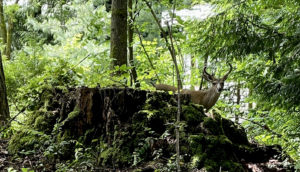 In Sequoia and Kings Canyon National Parks in California, trees that have persisted through rain and shine for thousands of years are now facing multiple threats triggered by a changing climate. Scientists and park managers once thought giant sequoia forests nearly impervious to stressors like wildfire, drought and pests. Yet, even very large trees are proving vulnerable, particularly when those stressors are amplified by rising temperatures and increasing weather extremes. The rapid pace of climate change – combined with threats like the spread of invasive species and diseases – can affect ecosystems in ways that defy expectations based on past experiences… To protect these places, which are valued for their natural beauty and the benefits they provide for recreation, clean water and wildlife, forest and land managers increasingly must anticipate risks they have never seen before. And they must prepare for what those risks will mean for stewardship as ecosystems rapidly transform.
In Sequoia and Kings Canyon National Parks in California, trees that have persisted through rain and shine for thousands of years are now facing multiple threats triggered by a changing climate. Scientists and park managers once thought giant sequoia forests nearly impervious to stressors like wildfire, drought and pests. Yet, even very large trees are proving vulnerable, particularly when those stressors are amplified by rising temperatures and increasing weather extremes. The rapid pace of climate change – combined with threats like the spread of invasive species and diseases – can affect ecosystems in ways that defy expectations based on past experiences… To protect these places, which are valued for their natural beauty and the benefits they provide for recreation, clean water and wildlife, forest and land managers increasingly must anticipate risks they have never seen before. And they must prepare for what those risks will mean for stewardship as ecosystems rapidly transform. If you’re wondering why squirrels seem to vastly outnumber raccoons—or why certain car brands dominate city streets—a team of University of Virginia researchers may be able to help. Some species are abundant while most are rare. For nearly a century, scientists have sought a mathematical model to describe this pattern, the “hollow curve” species-abundance distribution, found universally within ecological communities. A recent breakthrough by a team within UVA’s Department of Biology seems to have finally cracked this ecological puzzle. By analyzing 30,000 datasets ranging from the distribution of tree species across the United States to bacterial communities living in the human gut, they found that a model called the “powerbend distribution” accurately describes the species abundance across plant, animal and microbial communities. Their findings were
If you’re wondering why squirrels seem to vastly outnumber raccoons—or why certain car brands dominate city streets—a team of University of Virginia researchers may be able to help. Some species are abundant while most are rare. For nearly a century, scientists have sought a mathematical model to describe this pattern, the “hollow curve” species-abundance distribution, found universally within ecological communities. A recent breakthrough by a team within UVA’s Department of Biology seems to have finally cracked this ecological puzzle. By analyzing 30,000 datasets ranging from the distribution of tree species across the United States to bacterial communities living in the human gut, they found that a model called the “powerbend distribution” accurately describes the species abundance across plant, animal and microbial communities. Their findings were 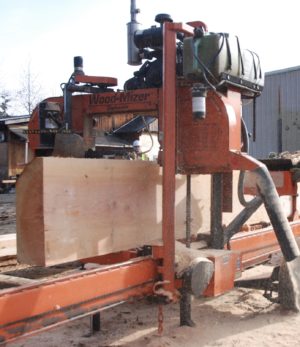 Reagan Brown sliced a board from a cut log using a brand new bright orange sawmill as a crowd of students, teachers and lumber industry workers looked on. He was part of a day-long event Orofino Junior Senior High School put on to show off its new trade programs, including the sawmill. Aiden Olive, a senior, was helping Reagan. “ This is completely new, we got this about a month ago, we put it together ourselves,” he said. The school is in a river valley surrounded by hills covered in evergreen trees – the kind of forest that has been logged for more than a hundred years. It’s a $2.5 billion industry in Idaho, but it’s looking for workers. “ I wasn’t really certain about going into forestry at first, but after getting this mill and running it and seeing how it works, I really actually think that could be some possibility of going into forestry,” Olive said.
Reagan Brown sliced a board from a cut log using a brand new bright orange sawmill as a crowd of students, teachers and lumber industry workers looked on. He was part of a day-long event Orofino Junior Senior High School put on to show off its new trade programs, including the sawmill. Aiden Olive, a senior, was helping Reagan. “ This is completely new, we got this about a month ago, we put it together ourselves,” he said. The school is in a river valley surrounded by hills covered in evergreen trees – the kind of forest that has been logged for more than a hundred years. It’s a $2.5 billion industry in Idaho, but it’s looking for workers. “ I wasn’t really certain about going into forestry at first, but after getting this mill and running it and seeing how it works, I really actually think that could be some possibility of going into forestry,” Olive said.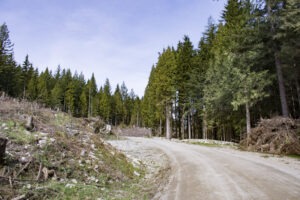 As the Forest Service contracts with slashed staff and funding, local communities are stepping up with funding for backcountry trail crews, visitor education campaigns and management of campsites and trailheads. “These folks need help. We know how important it is to have a physical human presence out there,” said Dave Ochs, the head of the Crested Butte Mountain Bike Association, which is administering $62,500 in local funding to support three seasonal Forest Service employees around Crested Butte. “Let’s help our partners. They are in need and we care very much for our backyard.” This is a scene unfolding across Colorado’s public lands as communities labor to fill gaps left by the sudden retraction of the federal government under the Trump Administration.
As the Forest Service contracts with slashed staff and funding, local communities are stepping up with funding for backcountry trail crews, visitor education campaigns and management of campsites and trailheads. “These folks need help. We know how important it is to have a physical human presence out there,” said Dave Ochs, the head of the Crested Butte Mountain Bike Association, which is administering $62,500 in local funding to support three seasonal Forest Service employees around Crested Butte. “Let’s help our partners. They are in need and we care very much for our backyard.” This is a scene unfolding across Colorado’s public lands as communities labor to fill gaps left by the sudden retraction of the federal government under the Trump Administration.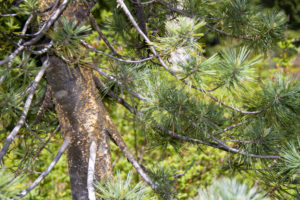 The proposed development and expansion of Grand Targhee Resort may require the removal of about 456 whitebark pine trees. At the level of detail in the environmental impact statement released last month, it’s unclear whether some projects can be amended to save trees within the project area. It’s also unclear how many of the trees within the project area are mature, cone-bearing trees necessary for the species’ reproduction. Caribou-Targhee National Forest officials, who are reviewing Targhee’s expansion plans, said the 456-tree estimate is likely high. In past projects, Teton Basin District Ranger Jay Pence said, “Grand Targhee and the Forest Service [have] routinely been able to shift some of the disturbances to avoid whitebark pine stands.”.. Whitebark were listed as “threatened” by the U.S. Fish and Wildlife Service in 2023. But its Endangered Species Act protections do not prohibit them from being hewn.
The proposed development and expansion of Grand Targhee Resort may require the removal of about 456 whitebark pine trees. At the level of detail in the environmental impact statement released last month, it’s unclear whether some projects can be amended to save trees within the project area. It’s also unclear how many of the trees within the project area are mature, cone-bearing trees necessary for the species’ reproduction. Caribou-Targhee National Forest officials, who are reviewing Targhee’s expansion plans, said the 456-tree estimate is likely high. In past projects, Teton Basin District Ranger Jay Pence said, “Grand Targhee and the Forest Service [have] routinely been able to shift some of the disturbances to avoid whitebark pine stands.”.. Whitebark were listed as “threatened” by the U.S. Fish and Wildlife Service in 2023. But its Endangered Species Act protections do not prohibit them from being hewn.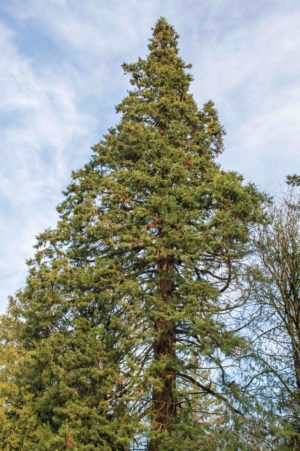 The federal government is awarding Utah $3 million to purchase conservation easements in southern Utah near Zion National Park. The funding — awarded to the Utah Division of Forestry, Fire and State Lands by the U.S. Department of Agriculture — was announced Monday and will go toward ongoing forest preservation efforts outside of the national park. Called the Zion Connectivity Project, the state will direct the funding at two properties totalling 766 acres near the north section of the national park. A conservation easement — a legally binding agreement between a landowner and government that places restrictions on the land for environmental purposes — will prevent the land from being fragmented or developed. That will help preserve the ecologically rich stretch of forest. Old-growth ponderosa pines, some of them hundreds of years old, can be found in the area.
The federal government is awarding Utah $3 million to purchase conservation easements in southern Utah near Zion National Park. The funding — awarded to the Utah Division of Forestry, Fire and State Lands by the U.S. Department of Agriculture — was announced Monday and will go toward ongoing forest preservation efforts outside of the national park. Called the Zion Connectivity Project, the state will direct the funding at two properties totalling 766 acres near the north section of the national park. A conservation easement — a legally binding agreement between a landowner and government that places restrictions on the land for environmental purposes — will prevent the land from being fragmented or developed. That will help preserve the ecologically rich stretch of forest. Old-growth ponderosa pines, some of them hundreds of years old, can be found in the area. The Clallam County Superior Court denied environmentalists’ request for an administrative stay on two local Department of Natural Resources parcels, although it granted a motion to compel information from the state agency. If the stay had been granted, it would have barred logging-related activities for 90 days on the parcels named Parched and Tree Well. The motion to compel will require the Department of Natural Resources (DNR) to file administrative records relevant to the case by June 18 – a five-month delay from the original required date of Jan. 2. The logging rights for these two forests were bought by Oregon-based Murphy Company in December. Although road building has begun, there is no planned logging on these properties until next year at the earliest, according to Murphy’s intervenor.
The Clallam County Superior Court denied environmentalists’ request for an administrative stay on two local Department of Natural Resources parcels, although it granted a motion to compel information from the state agency. If the stay had been granted, it would have barred logging-related activities for 90 days on the parcels named Parched and Tree Well. The motion to compel will require the Department of Natural Resources (DNR) to file administrative records relevant to the case by June 18 – a five-month delay from the original required date of Jan. 2. The logging rights for these two forests were bought by Oregon-based Murphy Company in December. Although road building has begun, there is no planned logging on these properties until next year at the earliest, according to Murphy’s intervenor.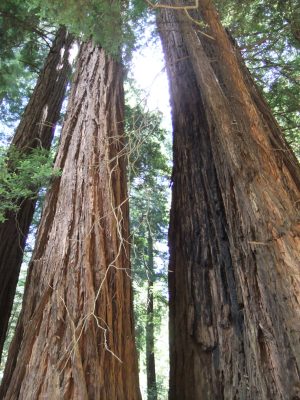 The rate at which trees are dying in California has hit a 10-year low, according to a survey from the U.S. Forest Service. Trees were dying at an alarming rate from 2015 to 2018, but after significant snow and rainfall in recent years, trees are getting their necessary nutrients. “We’ve had a couple good years of precipitation,” said Jeffrey Moore, aerial survey manager with the Forest Service. “We expected the amount of mortality to start tapering off, and indeed that was the case.” Severe droughts, he says, are the main culprits for the amount of trees that die. Less water means fewer nutrients, which then allows for a greater chance of trees to get disease or infected with bugs that feed on dry bark.
The rate at which trees are dying in California has hit a 10-year low, according to a survey from the U.S. Forest Service. Trees were dying at an alarming rate from 2015 to 2018, but after significant snow and rainfall in recent years, trees are getting their necessary nutrients. “We’ve had a couple good years of precipitation,” said Jeffrey Moore, aerial survey manager with the Forest Service. “We expected the amount of mortality to start tapering off, and indeed that was the case.” Severe droughts, he says, are the main culprits for the amount of trees that die. Less water means fewer nutrients, which then allows for a greater chance of trees to get disease or infected with bugs that feed on dry bark.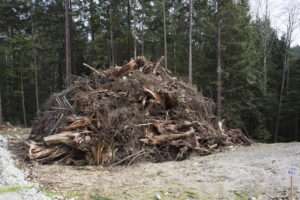 Sawmills are working to recycle trees blown down by Hurricane Helene to assist wildland firefighters while boosting domestic timber production. Many of the trees downed by the storm are usable, according to Johnny Evans, owner of EvAns Lumber Co. in Manchester, Tennessee. About 6% of the lumber produced at his facility comes from trees that fell during natural disasters. The Tennessee Department of Agriculture’s Forestry Division estimated it could take at least three years for the thickest trees downed by Hurricane Helene to dry out enough to become potential wildfire fuel. However, those trees can still hinder firefighting efforts by getting in the way of bulldozers used to create firelines. “Those trees are there just blocking the dozers. So we have to send in crews to clear a path for the dozers,” Megan Carpenter, a spokesperson for the Tennessee Department of Agriculture’s Forestry Division, said.
Sawmills are working to recycle trees blown down by Hurricane Helene to assist wildland firefighters while boosting domestic timber production. Many of the trees downed by the storm are usable, according to Johnny Evans, owner of EvAns Lumber Co. in Manchester, Tennessee. About 6% of the lumber produced at his facility comes from trees that fell during natural disasters. The Tennessee Department of Agriculture’s Forestry Division estimated it could take at least three years for the thickest trees downed by Hurricane Helene to dry out enough to become potential wildfire fuel. However, those trees can still hinder firefighting efforts by getting in the way of bulldozers used to create firelines. “Those trees are there just blocking the dozers. So we have to send in crews to clear a path for the dozers,” Megan Carpenter, a spokesperson for the Tennessee Department of Agriculture’s Forestry Division, said.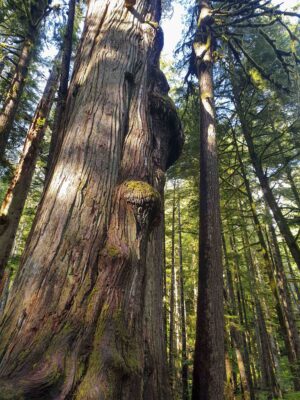 Thousands of acres of deep-woods habitats at Arcadia Dunes are now part of a nationwide network of current and future old-growth forests. The wooded areas at the C.S. Mott Nature Preserve in Benzie County this week became the latest place in Michigan to be inducted into the Old-Growth Forest Network, which now includes more than 270 permanently protected forests nationwide. The forest near the Lake Michigan shoreline boasts unique microclimates teeming with old beech and hemlock trees, spring wildflowers, and rare native plants. Grand Traverse Regional Land Conservancy hosted a two-mile hike Wednesday, May 21, along the preserve’s Dryhill Trail Chestnut Loop to celebrate the northern mesic forest being added to the nationwide old-growth roster. The nature preserve is the conservancy’s largest and includes a mix of secondary hardwoods, coastal dunes, and open fields around old farmland and pastures.
Thousands of acres of deep-woods habitats at Arcadia Dunes are now part of a nationwide network of current and future old-growth forests. The wooded areas at the C.S. Mott Nature Preserve in Benzie County this week became the latest place in Michigan to be inducted into the Old-Growth Forest Network, which now includes more than 270 permanently protected forests nationwide. The forest near the Lake Michigan shoreline boasts unique microclimates teeming with old beech and hemlock trees, spring wildflowers, and rare native plants. Grand Traverse Regional Land Conservancy hosted a two-mile hike Wednesday, May 21, along the preserve’s Dryhill Trail Chestnut Loop to celebrate the northern mesic forest being added to the nationwide old-growth roster. The nature preserve is the conservancy’s largest and includes a mix of secondary hardwoods, coastal dunes, and open fields around old farmland and pastures.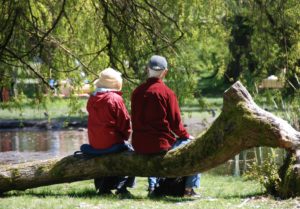 A quarter of a Welsh city will be covered by tree canopies within 10 years due to a new plan to boost its “urban forest”. Almost 30,000 trees will be planted in Newport to supplement about 250,000 existing trees. Wales was the first country in the world to measure its urban tree coverage. The council hopes these trees and others planted by private developers and landowners will take canopy cover in Newport – which at 18% had the highest proportion of any Welsh city in 2016 – to 25%. Joanne Gossage, service manager for environment and leisure at Newport council said the city had “green oasis” parks. She said: “We feel that Newport is a very green city and we don’t think it’s too far of a stretch to get to that 25%. “People’s perception of an urban forest is something dark, perhaps menacing and dingy. It’s not. It’s about trees making attractive frameworks in limited open space.”
A quarter of a Welsh city will be covered by tree canopies within 10 years due to a new plan to boost its “urban forest”. Almost 30,000 trees will be planted in Newport to supplement about 250,000 existing trees. Wales was the first country in the world to measure its urban tree coverage. The council hopes these trees and others planted by private developers and landowners will take canopy cover in Newport – which at 18% had the highest proportion of any Welsh city in 2016 – to 25%. Joanne Gossage, service manager for environment and leisure at Newport council said the city had “green oasis” parks. She said: “We feel that Newport is a very green city and we don’t think it’s too far of a stretch to get to that 25%. “People’s perception of an urban forest is something dark, perhaps menacing and dingy. It’s not. It’s about trees making attractive frameworks in limited open space.”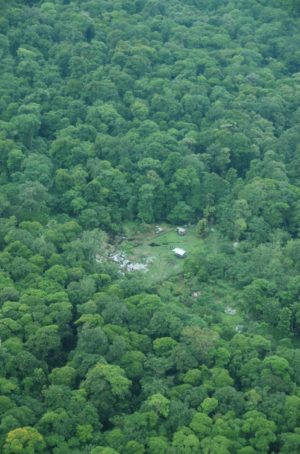 Around the world, nefarious state and nonstate actors are extracting enormous value from forests to fund their operations. The unlawful clearing of land and the harvest, transport, purchase, and sale of timber and related commodities have long been dismissed as a niche concern of environmental activists. But this is a mistake. Although unsustainable deforestation imperils the environment, illegal logging also poses an outsize—and underacknowledged—geopolitical threat. Environmental crime constitutes a growing economic and national security threat to the United States and countries around the world. Yet Washington has largely ignored illegal logging’s role in its fight against transnational criminal organizations, drug cartels, terrorists, and rogue regimes, as well as China’s part in this illicit trade. Thankfully, the blueprint for fighting transnational crime already exists: better cooperation among governments, increased enforcement, more transparent supply chains, public-private partnerships, and most important, following the money.
Around the world, nefarious state and nonstate actors are extracting enormous value from forests to fund their operations. The unlawful clearing of land and the harvest, transport, purchase, and sale of timber and related commodities have long been dismissed as a niche concern of environmental activists. But this is a mistake. Although unsustainable deforestation imperils the environment, illegal logging also poses an outsize—and underacknowledged—geopolitical threat. Environmental crime constitutes a growing economic and national security threat to the United States and countries around the world. Yet Washington has largely ignored illegal logging’s role in its fight against transnational criminal organizations, drug cartels, terrorists, and rogue regimes, as well as China’s part in this illicit trade. Thankfully, the blueprint for fighting transnational crime already exists: better cooperation among governments, increased enforcement, more transparent supply chains, public-private partnerships, and most important, following the money. Centuries ago, around 80% of Ireland’s green landscape was covered in trees – many of which were hundreds of years old. The arrival of modern agriculture changed that now less than 1% of the island is covered by ancient woodland. The Government hopes to reverse this historic trend and is aiming to cover 18% of the State in trees by 2050. Businesses are getting involved as well; Wolfman Digital bought a plot of land seven-years ago and staff were bussed out to plant trees on it. “Back in 2017, we decided we wanted to become carbon neutral,” CEO Alan Coleman said. “We were looking into our different options and we learnt three things about forests that really made us feel strongly that we wanted to start planting trees. “The first thing we learnt is that forestry is one of the strongest solutions to global warming.”
Centuries ago, around 80% of Ireland’s green landscape was covered in trees – many of which were hundreds of years old. The arrival of modern agriculture changed that now less than 1% of the island is covered by ancient woodland. The Government hopes to reverse this historic trend and is aiming to cover 18% of the State in trees by 2050. Businesses are getting involved as well; Wolfman Digital bought a plot of land seven-years ago and staff were bussed out to plant trees on it. “Back in 2017, we decided we wanted to become carbon neutral,” CEO Alan Coleman said. “We were looking into our different options and we learnt three things about forests that really made us feel strongly that we wanted to start planting trees. “The first thing we learnt is that forestry is one of the strongest solutions to global warming.”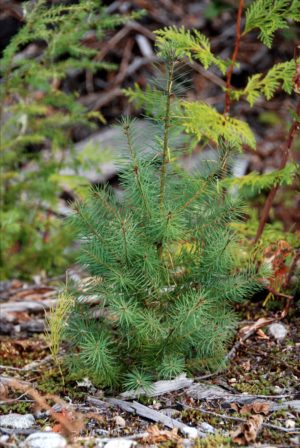 The future of the European forests is at risk due to our changing climate. To observe the effects of climate change, we often look at the large trees. But the young trees are the future of the forest and are also the most vulnerable. The current drought is the biggest threat to young trees. A recent study
The future of the European forests is at risk due to our changing climate. To observe the effects of climate change, we often look at the large trees. But the young trees are the future of the forest and are also the most vulnerable. The current drought is the biggest threat to young trees. A recent study 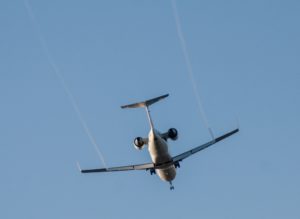 Boeing Canada says it’s investing millions of dollars into business ventures in B.C. and Quebec with the eventual goal of producing close to 200 million litres of sustainable jet fuel every year. The announcement, made Wednesday, includes nearly $17.5 million split between two projects looking to turn wood waste and carbon captured from industrial smokestacks into sustainable aviation fuel. The fuel, known in industry as SAF, has the potential to reduce carbon emissions by up to 80 per cent over its lifecycle and “offers the fastest route to decarbonization in the aviation sector,” according to Boeing. Boeing’s latest investment will direct $10 million to Project Avance, a joint venture between Bioenergie AECN and Alder Renewables in Port Cartier, Que. The project aims to convert wood residue from sawmills into low-carbon bio-crude that can later be converted into almost 38 million litres of unblended jet fuel every year.
Boeing Canada says it’s investing millions of dollars into business ventures in B.C. and Quebec with the eventual goal of producing close to 200 million litres of sustainable jet fuel every year. The announcement, made Wednesday, includes nearly $17.5 million split between two projects looking to turn wood waste and carbon captured from industrial smokestacks into sustainable aviation fuel. The fuel, known in industry as SAF, has the potential to reduce carbon emissions by up to 80 per cent over its lifecycle and “offers the fastest route to decarbonization in the aviation sector,” according to Boeing. Boeing’s latest investment will direct $10 million to Project Avance, a joint venture between Bioenergie AECN and Alder Renewables in Port Cartier, Que. The project aims to convert wood residue from sawmills into low-carbon bio-crude that can later be converted into almost 38 million litres of unblended jet fuel every year.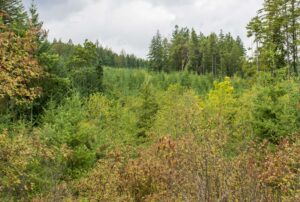 A law signed by Gov. Janet Mills last week
A law signed by Gov. Janet Mills last week 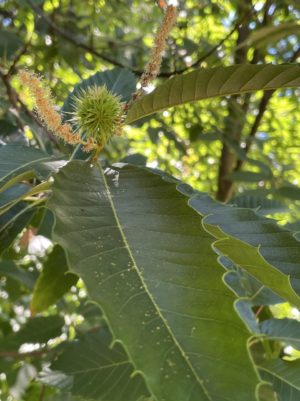 Researchers from the University of Nottingham and CSIRO Australia have developed a pioneering combined milling and combustion performance model to improve the selection of low carbon fuels for power generation. Published in the
Researchers from the University of Nottingham and CSIRO Australia have developed a pioneering combined milling and combustion performance model to improve the selection of low carbon fuels for power generation. Published in the  Rio Tinto has started growing pongamia trees in northern Australia, as part of a biofuels project aimed at reducing the mining giant’s reliance on fossil fuels. Pongamia trees are native to Australia and produce oil-rich seeds that can be processed into renewable diesel… Earlier this year, Rio Tinto trialled 10 million litres of renewable diesel — created from used cooking oil — across its Pilbara iron ore operations in Western Australia. The biofuel got used across the supply chain, featuring in Rio Tinto’s rail, marine, haul trucks, surface mining equipment and light vehicles… Forestry Industry Association of the Northern Territory (FIANT) manager Hanna Lillicrap said it was great to see a major mining company getting involved in the forestry sector. “It reflects a growing recognition of the role forestry can play as a climate-positive solution in emissions reduction strategies,” she said. “It’s great to see serious investment going into research to better understand the species and its potential,” she said.
Rio Tinto has started growing pongamia trees in northern Australia, as part of a biofuels project aimed at reducing the mining giant’s reliance on fossil fuels. Pongamia trees are native to Australia and produce oil-rich seeds that can be processed into renewable diesel… Earlier this year, Rio Tinto trialled 10 million litres of renewable diesel — created from used cooking oil — across its Pilbara iron ore operations in Western Australia. The biofuel got used across the supply chain, featuring in Rio Tinto’s rail, marine, haul trucks, surface mining equipment and light vehicles… Forestry Industry Association of the Northern Territory (FIANT) manager Hanna Lillicrap said it was great to see a major mining company getting involved in the forestry sector. “It reflects a growing recognition of the role forestry can play as a climate-positive solution in emissions reduction strategies,” she said. “It’s great to see serious investment going into research to better understand the species and its potential,” she said.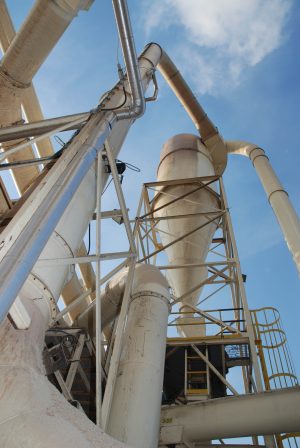 Mineral water producer Gerolsteiner Brunnen has broken ground on a new biomass combined heat and power (CHP) plant at its site in the Vulkaneifel region, Germany, in partnership with energy provider E.ON. The plant is set to significantly reduce the company’s reliance on fossil fuels and further its long-standing commitment to climate protection. Once operational in early 2027, the plant will supply up to 95% of Gerolsteiner’s heat demand and around 20% of its electricity needs. It will run on regionally sourced biomass, including wood chips from damaged or diseased wood, forest residues, and green waste, that would otherwise go unused in traditional wood processing industries… The project is expected to reduce the company’s carbon emissions by over 7,000 tonnes annually.
Mineral water producer Gerolsteiner Brunnen has broken ground on a new biomass combined heat and power (CHP) plant at its site in the Vulkaneifel region, Germany, in partnership with energy provider E.ON. The plant is set to significantly reduce the company’s reliance on fossil fuels and further its long-standing commitment to climate protection. Once operational in early 2027, the plant will supply up to 95% of Gerolsteiner’s heat demand and around 20% of its electricity needs. It will run on regionally sourced biomass, including wood chips from damaged or diseased wood, forest residues, and green waste, that would otherwise go unused in traditional wood processing industries… The project is expected to reduce the company’s carbon emissions by over 7,000 tonnes annually.